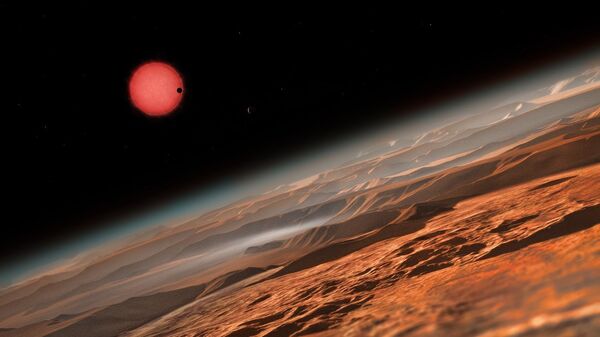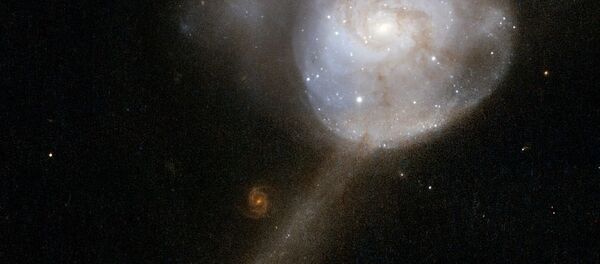A set of Earth-sized planets discovered earlier this year orbiting the nearby dwarf star TRAPPIST-1 might harbor substantial amounts of water, according to observations carried out using the NASA/ESA Hubble Space Telescope.
TRAPPIST-1 is an ultra-cool dwarf star only slightly larger than Jupiter, located approximately 40 light-years (378.4 trillion km) away from Earth in the constellation Aquarius.
In February, NASA announced the discovery of seven Earth- and Venus-sized planets orbiting TRAPPIST-1. Three of the exoplanets are believed to be within the star's habitable zone, also known as the "Goldilock's zone," an area where it is not too hot or too cold to support liquid water.
While the scientists aren't able to directly detect water, they used measurements of the UV energy emitted by the star to estimate the water lost by the planet, project scientist Dr. Vincent Bourrier of the University of Geneva told Radio Sputnik.
"It's important for us because we found that the outer planets of the system, including those in the habitable zone, seem to be the most likely to have retained a large amount of water. Now, this will help us to focus our observations on these planets to search for water directly," Bourrier explained.
"We made the estimates of the water loss using the direct measurement of the UV energy emitted by the star. So, now we need to get more measurements, measurements of other wavelengths."
Bourrier said that "we are very far from being able to detect any life form," but the scientists hope to better estimate the probability that life exists on one or more of the TRAPPIST-1 planets.
"The ultraviolet light is important for the chemistry in the atmosphere of the planet and it's important for the development of life. So, it can help the development of life but it can also indeed be very dangerous and we need to make new measurements to better estimate the radiation to be able, in the future, to see the development of life on the planets," Bourrier said.


